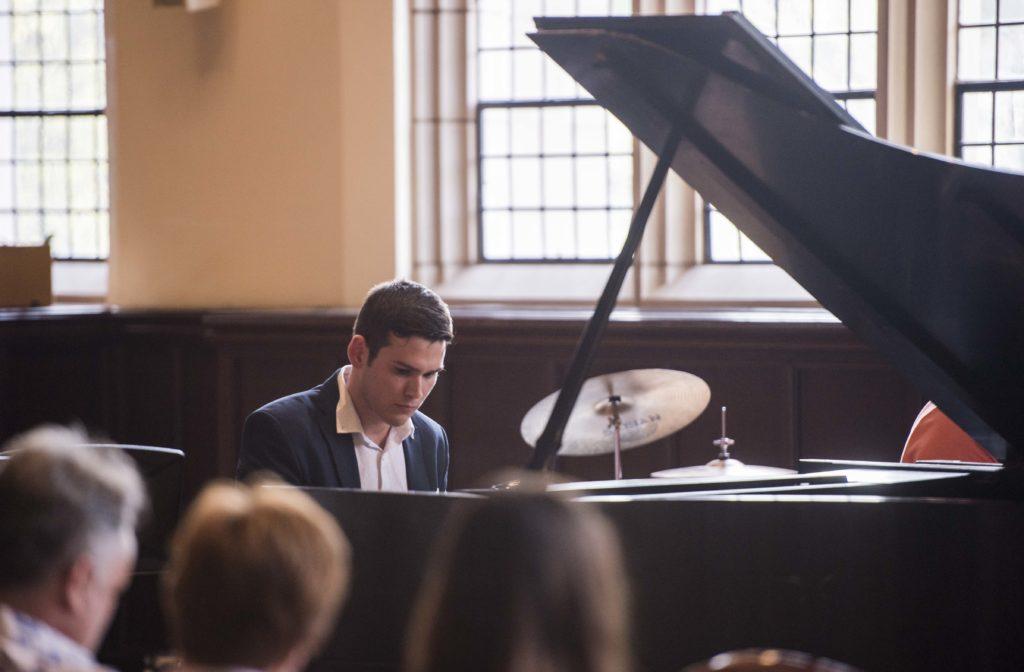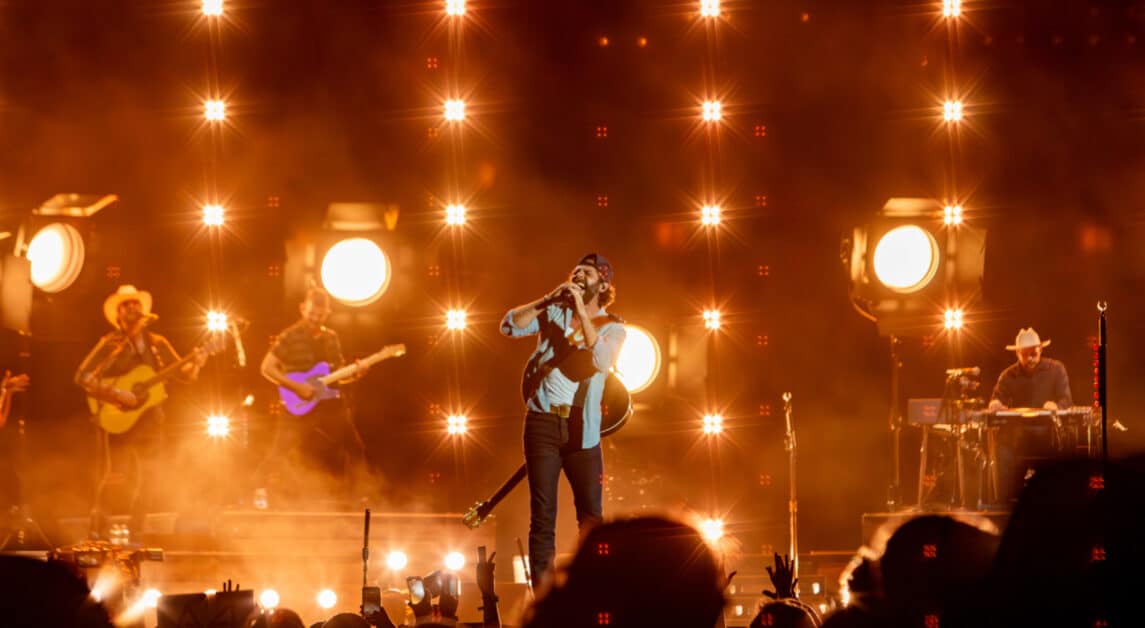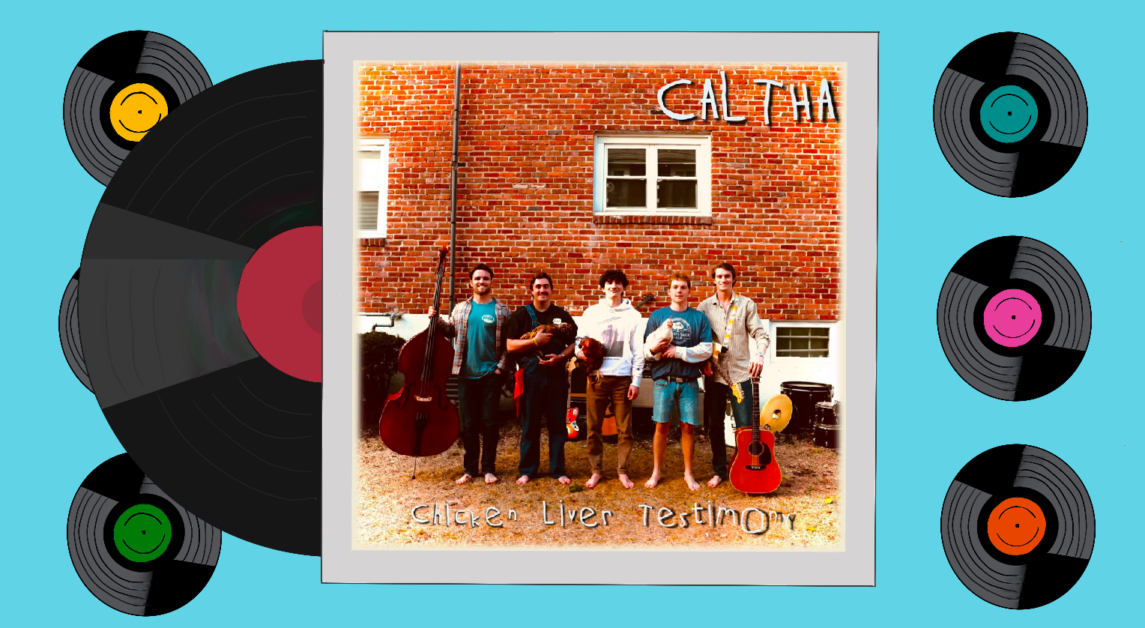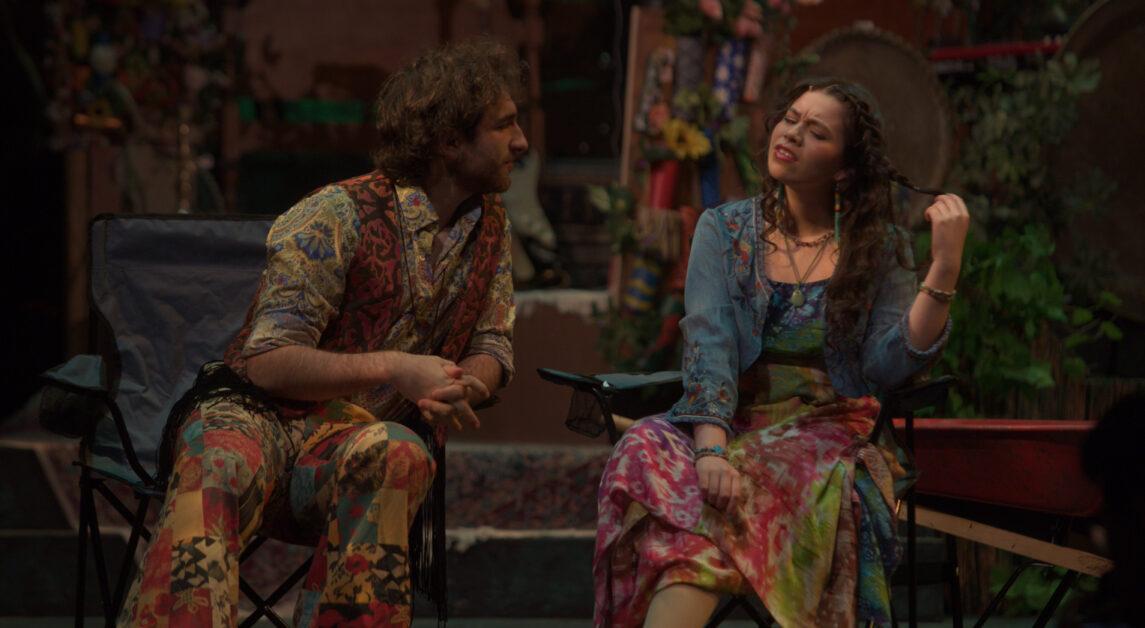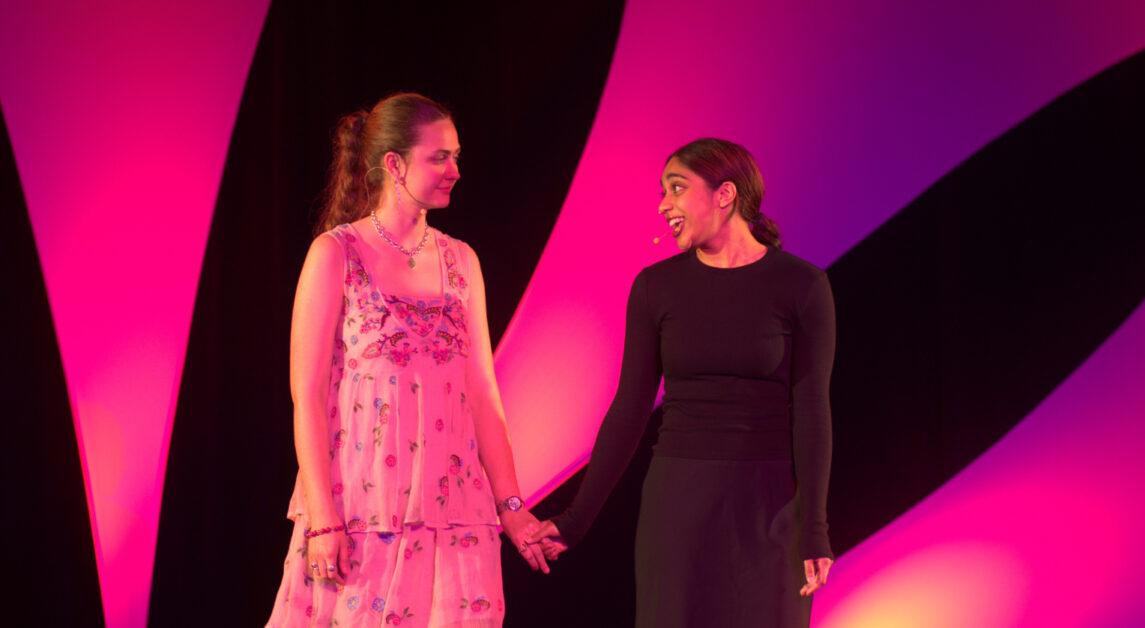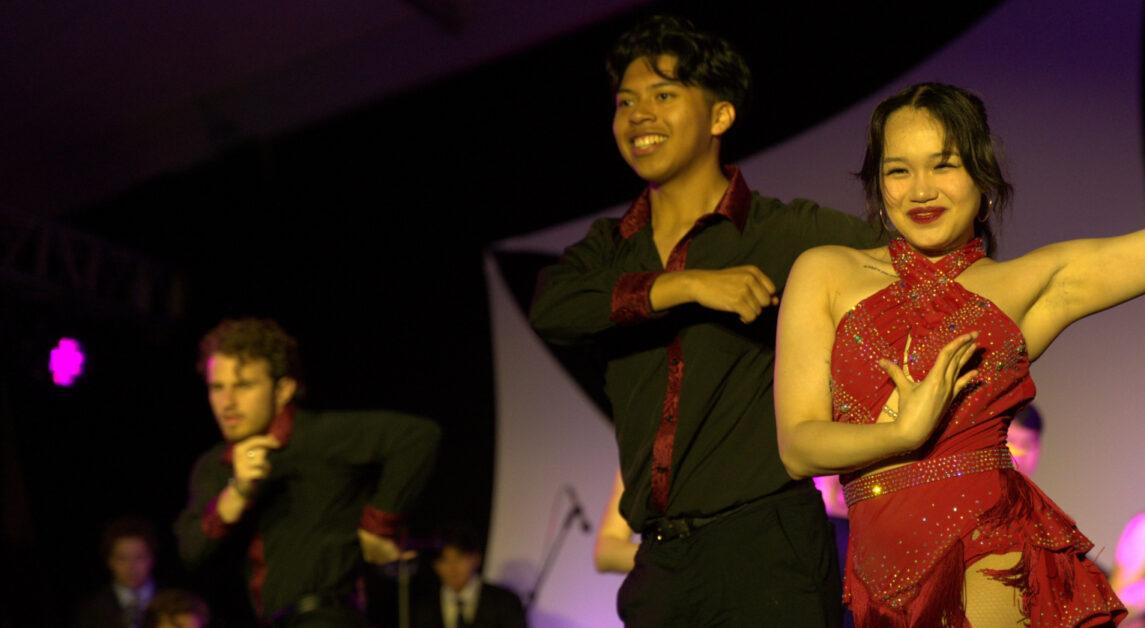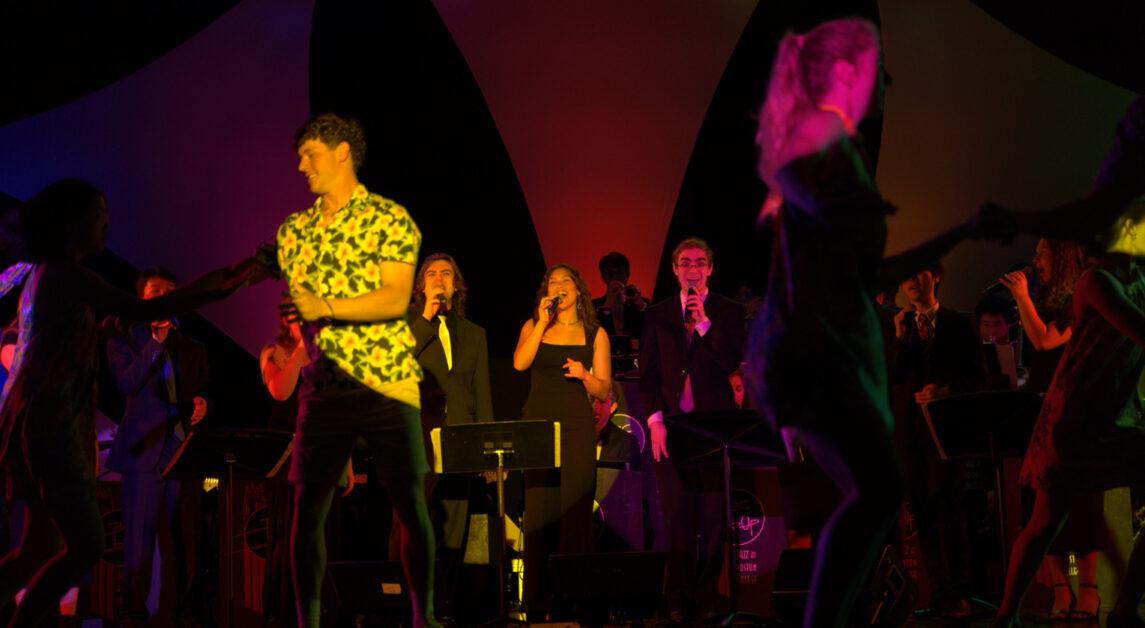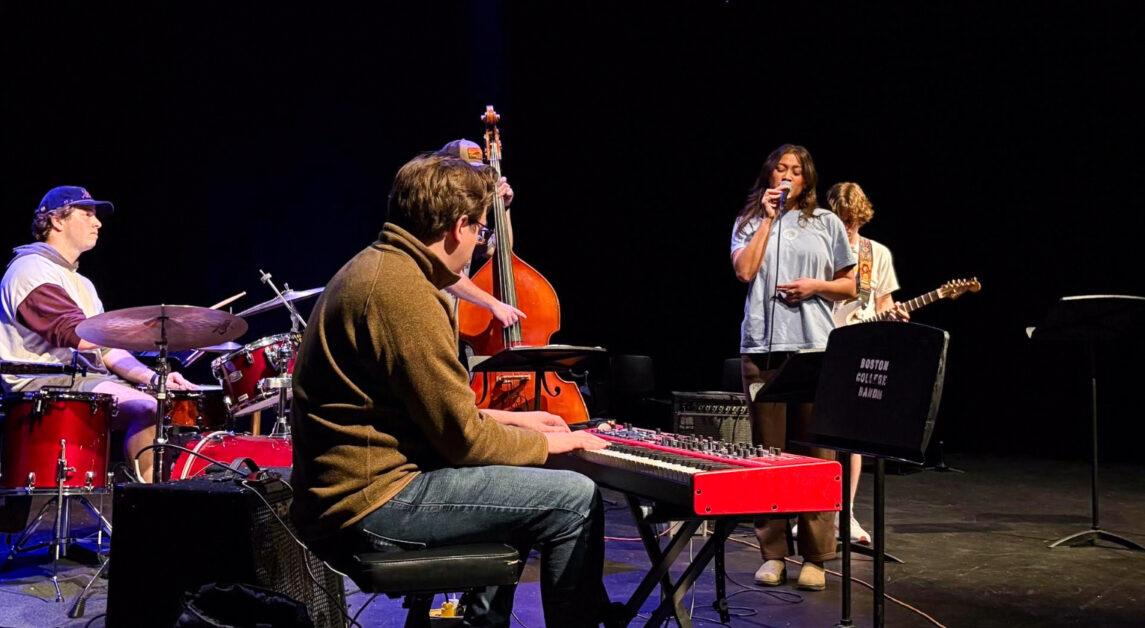Chamberstock, the spring concert series for Boston College music ensembles, featured three groups during its second segment on Monday in Gasson 100. BC Irish Fiddle, BC Cello Ensemble, and the BC Flute Ensemble each put on a showcase of the pieces they have been working on this semester.
Kicking off the evening was the musical styling of BC Irish Fiddle, led by director Sheila Falls-Keohane. The group, which consists of four students—Francesca Crutchfield-Stoker, GSSW ’18; Claire Feeney, CSON ’19; Fiona Henry, MCAS ’19; and Elizabeth Marston, CSON ’19—as well as one University Communications employee, Sean Smith—put on a show of traditional jigs, slip jigs, and reels. Falls-Keohane explained to the audience that her students learned all of the pieces by ear—none of it was written on sheet music. She said that although this method of learning is incredibly difficult, it ensures that the players will never forget the tunes.
After their last fast-paced reel, the fiddlers moved off to the side as the BC Cello Ensemble took the floor, playing two traditional Irish songs: “Trip to Dingle” and “Denis Murphy’s Slide.” The fiddle group came in as guests to play in sections of both songs, adding a fuller and more lively component to the low tone of the cellos. BC Cello Ensemble director Junko Fujiwara credited Falls-Keohane for helping the group learn the songs.
After its first two pieces, the Cello Ensemble moved closer to the audience as the BC Irish Fiddle members took their seats. For its last performance of the evening, the ensemble played Cello Concerto in B Minor, Op. 104, a long piece written by A. Dvorak. The tune ebbed and flowed as the students alternated between long bow strokes and quick plucking of the strings.
To finish off the event was BC Flute Ensemble under the direction of Judy Grant. The all-female group played seven pieces—two of which were performed only by the three Honors students and Grant, and one which featured solos for the four seniors in the group. The ensemble started off with a beautiful tone that was full, but light, as the lower flutes provided a stable base for the higher pitched melody to float on top. The songs in the performance progressed in chronological order, beginning with the Baroque period and extending to the 1980s.
To kick off the 8 p.m. Chamberstock performance, Daniel Lott, CSOM ’19, and Amy Huh, MCAS ’19, played Johan Halvorsen’s “Passacaglia” from George Frideric Handel’s Suite No. 7 on the violin and cello, respectively. This piece required extreme transitions in speed and technique, as the two went from higher speed playing to slowing down and plucking at the strings of their instruments with ease. In a sense, it was almost as if completely different players were playing each section of the music, but Lott and Huh managed the changes masterfully, showcasing their diverse skill sets.
Next, violinists Ekaterina Mironova, a graduate assistant, and Minki Hong, MCAS ’19, joined Walsh Kang, MCAS ’20, who played viola, and cellists Annie Hawes, MCAS ’19, and Junu Han, MCAS ’21, to play Alexander Borodin’s Quintet in F minor. This piece was more consistent in its pacing, but the musicians’ strength here was how in sync they were. Each part was very different, but the harmony of each aspect put together was extremely well executed. When the instruments finally came together as the piece came to a close, the plucked ending left a lasting impact on the audience.
The third performance featured violinist Nova Wang, MCAS ’21; cellist Robert Laidlaw, MCAS ’21; and pianist Tian Ye, MCAS ’20. They played Ludwig van Beethoven’s Trio in C minor. An extremely fast piece, the three performers’ hands were a blur as they moved along their respective instruments. Wang was practically dancing with his violin he had to do so much movement, Ye somehow was able to keep his fingers from straying to the wrong keys at an incredible speed, while Laidlaw calmly set the tone with long, strong movements along his cello—but even his bass line required speed. The trio managed to pull everything off without a hitch, despite the high degree of difficulty.
The penultimate performance of the night was far different: The flutist jumped into action for the first time during this hour, with cellist Emily Zhao, MCAS ’19, and a pianist joining her to perform Charles-Édouard Lefebvre’s “Ballade.” The leisurely pace made for a great transition from the loud, brisk Beethoven piece. The three instruments are so different that it must have been difficult to pull the pieces together, yet the three musicians pulled off the feat with aplomb, striking a perfect tone to contrast with the previous energetic performance.
The final piece was two movements from Wolfgang Amadeus Mozart’s Quartet in C minor, also known as “Dissonance.” Violinists Gabriel Valle, MCAS ’20, and George Bailey, CSOM ’21, were joined by Brigette Merriman, MCAS ’20, on the viola and Yulee Kim, MCAS ’20, on the cello. The first movement was somewhat patterned: Three of the musicians would perform in sync, while one moved away from the bass line and added metaphorical frosting to the cake foundation the other instruments were baking. Each musician nailed each transition from being in the background to moving into the foreground.
The second movement was much different: The instruments would be harmonizing very different parts, before coming together momentarily to perform in beautiful unison, followed by a transition back into organized chaos. The increased speed of this movement required careful volume control between the different instruments, but the four musicians pulled it all off, closing out the night with an abrupt, loud, and impressive ending.
Featured Image by / Heights Editor

